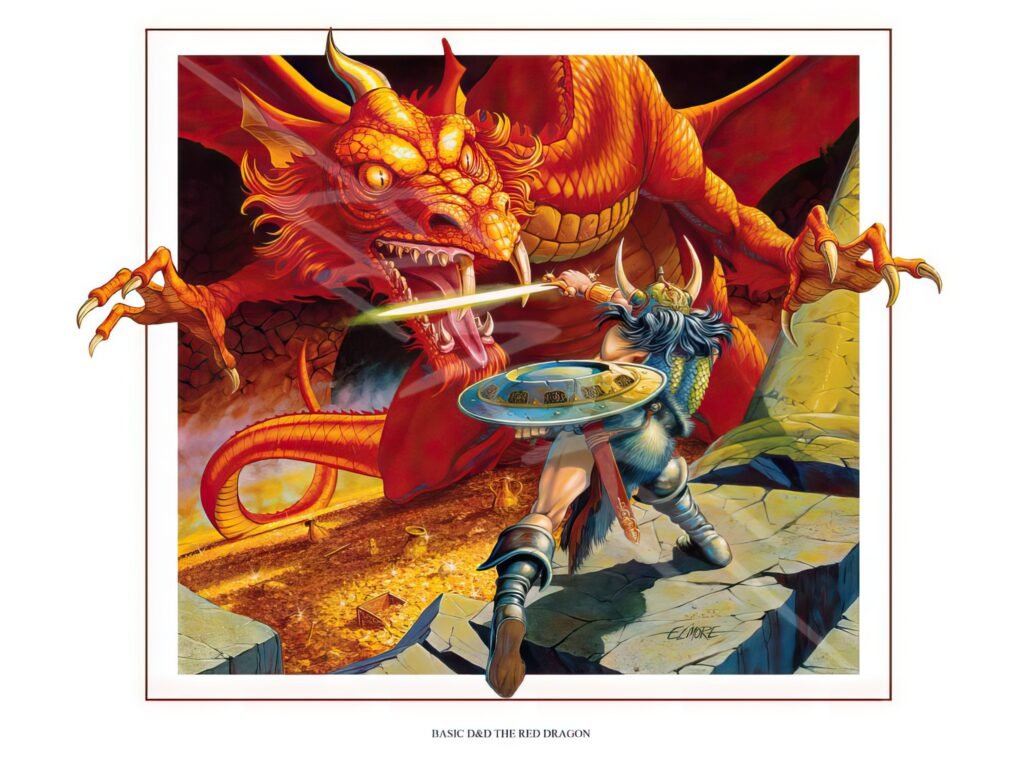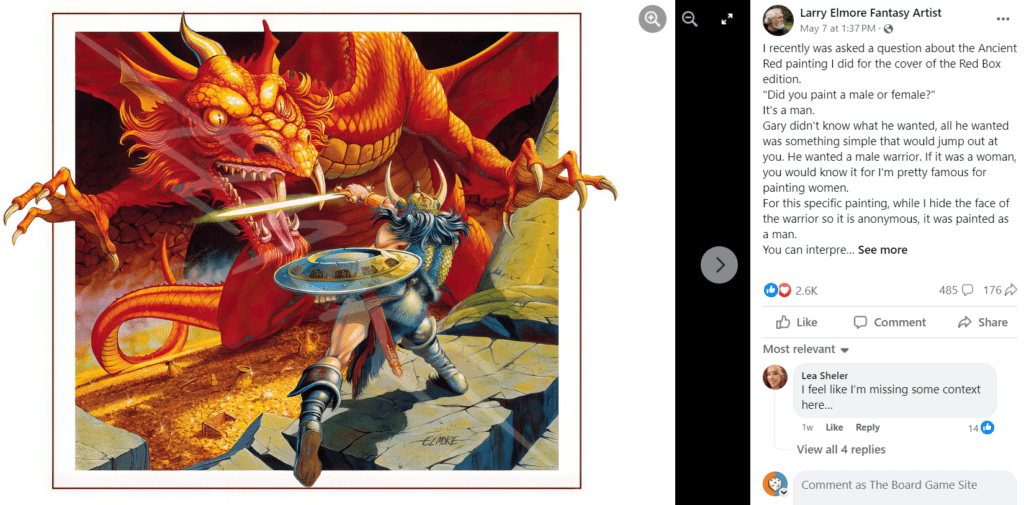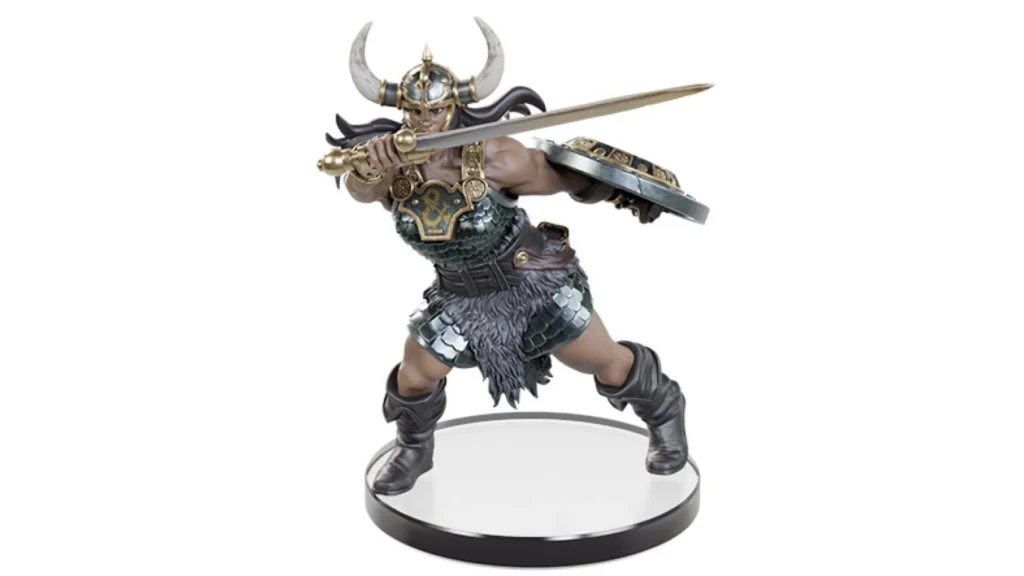
WizKids, a company known for producing high-quality miniatures and collectibles, has stirred controversy within the gaming community by unveiling a gender-swapped version of an iconic Dungeons and Dragons Red Box warrior. The figure in question is part of WizKids’ recently released D&D Icons of the Realms: 50th Anniversary set, which includes 10 “secret rare” toys packed inside randomized booster boxes.
The Artist’s Intent
The character at the center of the controversy is the faceless warrior featured on the cover of the classic D&D Red Box Basic Set, released in 1983. The original artwork, painted by renowned fantasy artist Larry Elmore, depicted a warrior seen from behind, wielding a sword and donning a horned helmet—a quintessential fantasy hero figure. Elmore himself has clarified that the warrior was intended to be male, stating, “The figure on the cover of the Red Box was definitely male. That was the idea, the classic male warrior figure.”

The Gender-Swapped Figure
In their 50th Anniversary set, WizKids has unveiled a miniature figure based on Elmore’s iconic warrior, but with a distinct twist: the figure now features feminine features, including a slender physique and long, flowing hair. This deliberate gender-swapping of an iconic character has sparked heated debates within the gaming community.

Reactions and Criticisms
Critics argue that altering the original artist’s intent and vision is a form of censorship and disrespect towards the creative process. They contend that the gender-swapping decision was made solely for the sake of inclusivity and political correctness, disregarding the artistic integrity of the original work.
Supporters of the change, on the other hand, applaud the efforts to promote diversity and representation in their products. They argue that the fantasy genre has long been dominated by male heroes and that introducing more female protagonists is a positive step towards inclusivity and breaking gender stereotypes.
The Argument for Creating New Characters
Another argument raised by critics is that if the people making these kinds of changes truly wanted to promote diversity and inclusivity, they could have created new, original characters instead of altering existing ones. This approach, they argue, would have allowed for fresh and authentic representation without compromising the artistic integrity of established works.
Critics suggest that the decision to gender-swap the iconic warrior was driven by laziness or a lack of creativity, rather than a genuine commitment to inclusivity. They argue that creating new, diverse characters from scratch requires more effort and imagination than simply modifying existing ones. By taking the easier route of gender-swapping, these efforts are accused of prioritizing convenience over meaningful representation.
Furthermore, critics argue that this laziness undermines the very goal of inclusivity. Authentic representation, they contend, should involve crafting well-developed, nuanced characters that celebrate diversity in a thoughtful and respectful manner, rather than simply altering the gender of existing characters as a superficial gesture.
The Broader Context
This controversy comes amidst ongoing debates surrounding sensitivity and inclusivity in the tabletop gaming industry. In recent years, Wizards of the Coast has made numerous changes to the language and depictions in their core rulebooks, aiming to remove potentially offensive or insensitive content.
While some welcome these efforts as necessary steps towards creating a more inclusive gaming environment, others view them as excessive censorship and a disregard for the game’s rich history and artistic expression.
Conclusion
The gender-swapping of the iconic Dungeons and Dragons Red Box warrior has reignited discussions about artistic integrity, representation, and the delicate balance between preserving creative visions and promoting inclusivity. As the gaming industry continues to evolve, these debates will likely persist, challenging creators, publishers, and fans to find common ground and navigate the complexities of representation in art and media.
At no extra cost to you, The Board Game Site may receive revenue from affiliate and advertising partnerships for sharing this content and from purchases through links.








